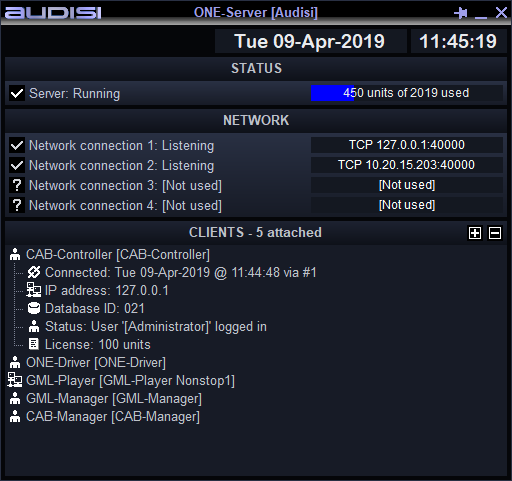Central (database) server that accepts connections of various types of
ONE- / CAB- / GML- / RDS- / VID-clients that exchange data and control.

The ONE-Server has three main functions:
- own the license
- manage the database
- exchange data with the client applications
1. Own the license
The server also takes care of the licensing system that is based on a floating license model. Each client has a value (in units) and any mix of clients can connect up to the maximum number of units that was purchased. When closing a client application, its units become available so you can start that same client on another workstation or another client can be started to perform different tasks.
2. Manage the database
The ONE-database contains data of:
- client applications and their settings
- user rights (application/stations/rundowns/categories)
- CAB devices/phonebook/tasks
- GML stations/grid/rundowns/categories/items
- NIO interfaces/logics/triggers/logic in- and outputs
- RDS settings
- VID settings/categories/items
- WEQ devices/parameters
Access to the ONE database is embedded in the Server application, therefore installing and maintaining a database engine like MS SQL or Sybase is not required. ONE clients do not need a database client or any other (ODBC) driver to get access to the central ONE database.
3. Exchange data with the client applications
Client applications rely on the database. First of all, their settings are stored in the database. This avoids local setup files or registry entries for clients.
Client applications send and receive data to/from the database. Queries and data are transported over the Audisi client-server network, using the internal network protocol. A healthy network is always present. Becasue outage can happen anytime, some clients may work without the network connection for several hours. The playout clients GML-Blaster and GML-Player can hold a local cache (rundowns and audio) for several hours to cover network problems.
